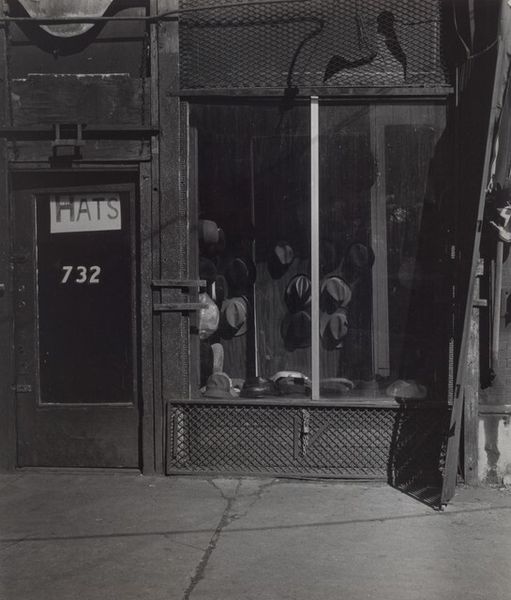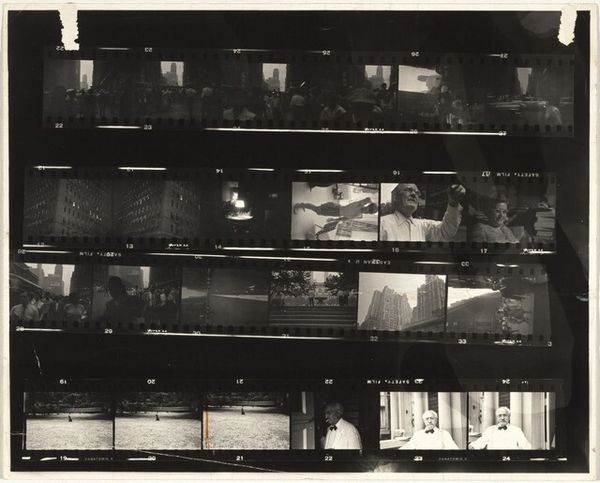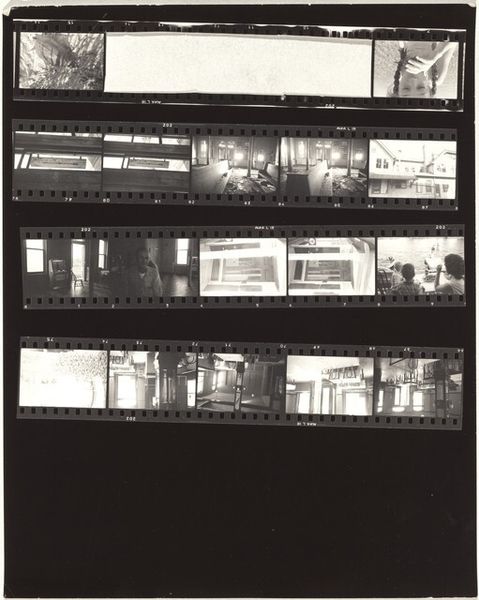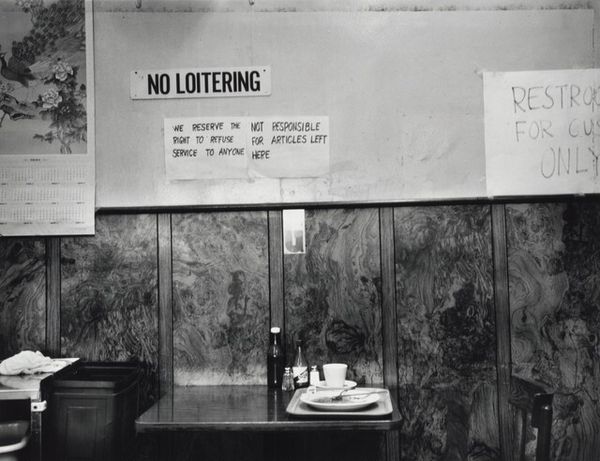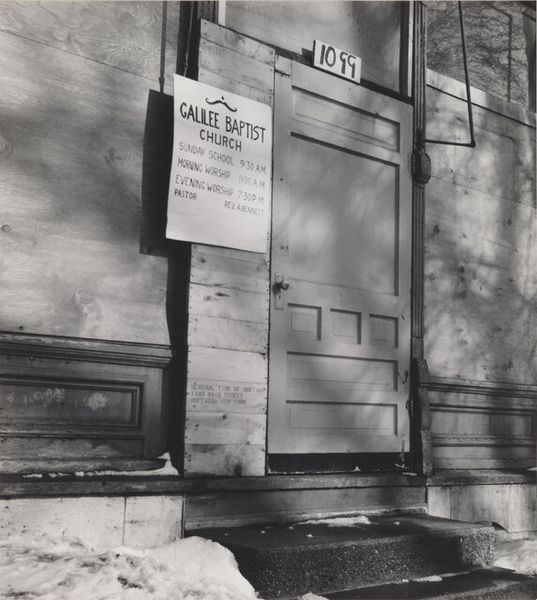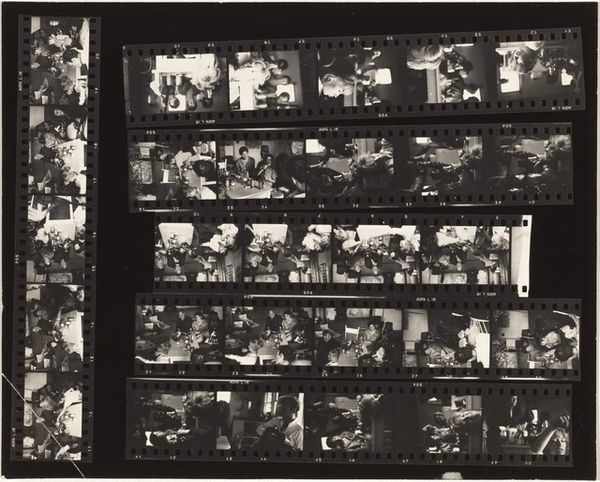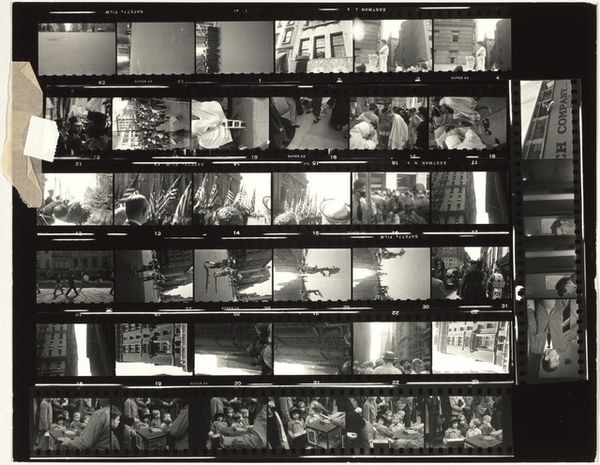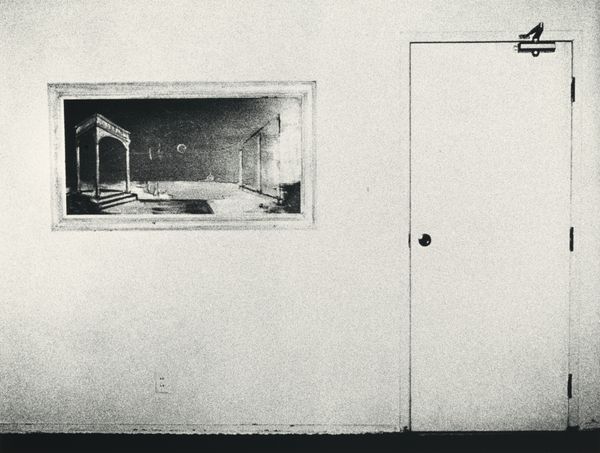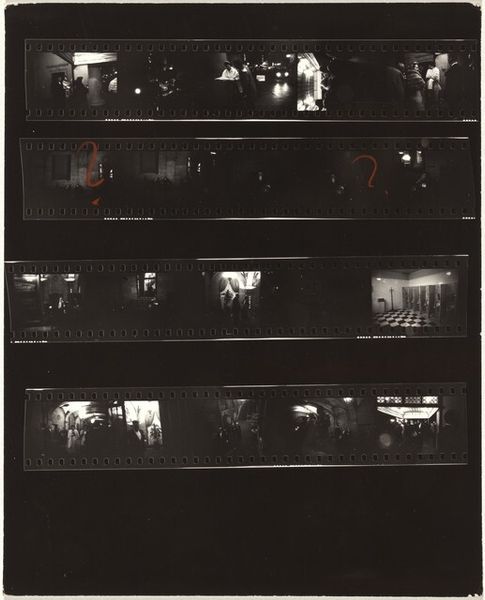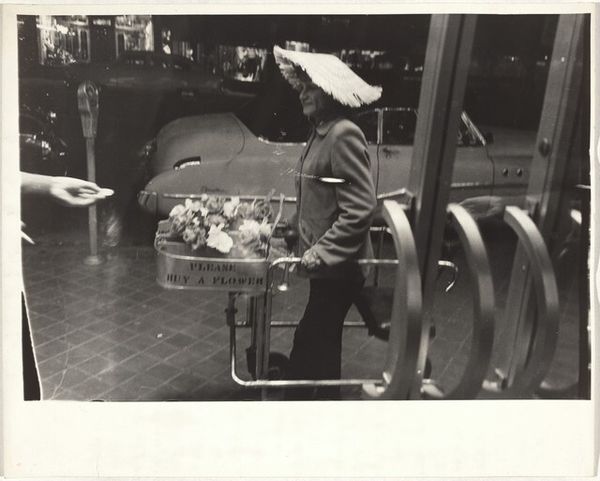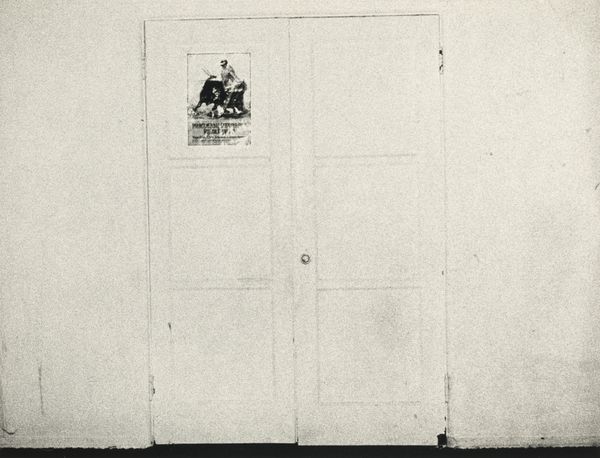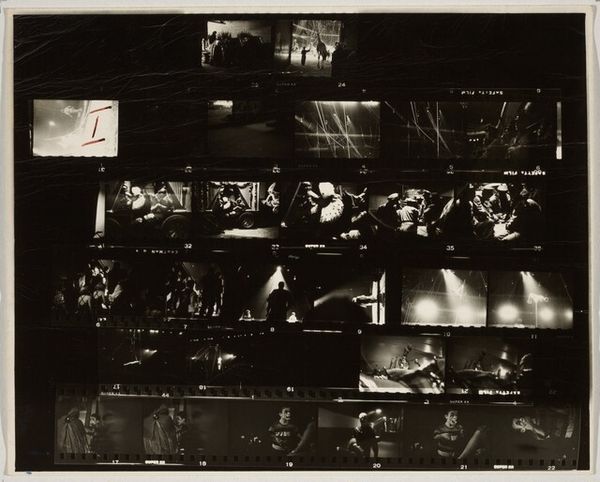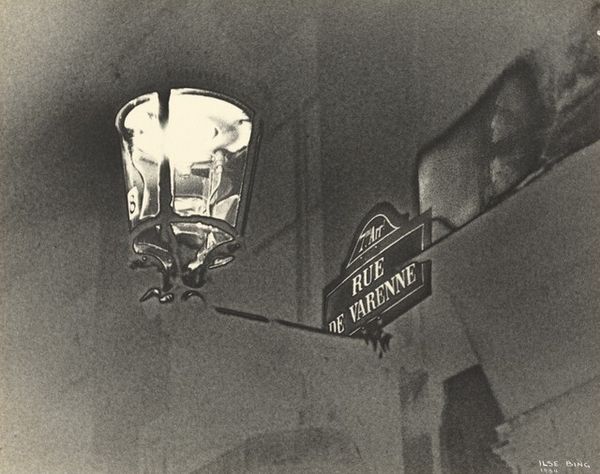
photography, gelatin-silver-print
#
portrait
#
contemporary
#
street-photography
#
photography
#
black and white
#
gelatin-silver-print
#
realism
Dimensions: sheet: 27.6 × 35.4 cm (10 7/8 × 13 15/16 in.) image: 25.1 × 32.5 cm (9 7/8 × 12 13/16 in.)
Copyright: National Gallery of Art: CC0 1.0
Curator: Jim Goldberg's gelatin-silver print, titled "Unknown Hotel, San Francisco," likely captured between 1991 and 1994, immediately strikes me with its gritty realism. Editor: The visual tension is incredible. The gate, the figure obscured behind it – a sense of entrapment, almost claustrophobia. It's stark. Curator: Goldberg’s known for documenting marginalized communities, so this likely depicts a low-income residential hotel, common in San Francisco. The layers of security – the gate, the "No Trespassing" sign – tell a story about the anxieties of urban life, the societal divisions made material. Editor: Absolutely. And all the visual symbols enhance this narrative: the warning signs, the vacant rooms announcement—emphasizing impermanence, almost rootlessness, perhaps? It’s all underscored by that very specific directive: "Stop. Do Not Pull Gate Wait 'Till It Buzz." Such controlled entry. Curator: It reflects Goldberg's practice of adding text to his photographs, directly including the voices and experiences of his subjects. It creates a compelling record of a certain time and social landscape. A kind of lived experience is encoded within it. Editor: The buzz serves a protective sound: a warning of some other realm inside or simply someone’s existence needing attention and the metal gate feels like it will be unyielding without such authorization. But does that person look like they belong in the building? Or were they turned away as another faceless applicant? There's a poignant sense of waiting there. The gate divides two very distinct concepts in this context—belonging versus alienation. Curator: I agree. The stark black and white enhances the emotional weight, simplifying it into a social and urban commentary about survival and division, rendered through Goldberg’s direct, yet empathic approach. The aesthetic choices contribute to the documentary narrative and reflect concerns prevalent in San Francisco during that period. Editor: Indeed, the signs – they transform an ordinary space into a layered, psychological territory of access and denial. This image invites one to ponder what is behind that office window—literally, as well as figuratively. Curator: I hadn't quite considered that, and now, thanks to your insights, I view its powerful symbolism on the theme of urban isolation even more acutely. Editor: My pleasure! It’s the combined force of those simple images together which provides this reading, so thanks to Jim Goldberg for constructing it and presenting it.
Comments
No comments
Be the first to comment and join the conversation on the ultimate creative platform.
